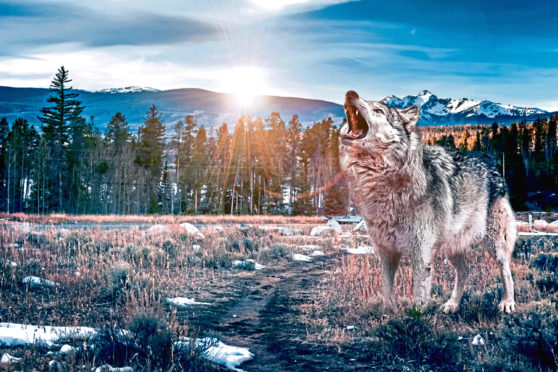IF YOU missed the US election last week, the result in Colorado was as follows: Joe Biden: 1,753,416 (55.3%), Donald Trump: 1,335,253 (42.1%)
So Colorado’s nine electoral events went to Joe Biden. Why mention Colorado? Because if you did miss the US election, you will also have missed the fact that on the same day, the state also voted for the reintroduction of wolves, which, in the pageant of North American history, is arguably more newsworthy than the admittedly entertaining spectacle of Donald Trump getting his comeuppance. Gray wolves on the way back, Trump gone. It’s what you might call a win-win situation.
The wolf campaign has been a long haul. Their reintroduction into Yellowstone in 1995 helped to rekindle interest west of the Rockies where wolves had been ruthlessly cleared. In the 100 years from the mid-1800s, Colorado’s population fell from 40,000 to zero. It was president Nixon of all unlikely people who put wolves on the endangered species list, and president Trump who took them off it again.
Reintroducing wolves
But by then wolves had been reintroduced in Wyoming, Idaho, New Mexico and Arizona. What is different about Colorado is that it was the state rather than the government that championed reintroduction. The Colorado Division of Wildlife had set up a wolf management working group in the early years of this century, then in 2004 something happened that transformed the campaign.
A collared wolf was killed trying to cross Interstate 70 near Idaho Springs, Colorado. She was Wolf 293F, a two-year-old from the Swan Lake pack in northern Yellowstone. She had travelled almost 500 miles alone. Colorado was handed a symbol of its missing wolves, of wolf reintroduction.
The following year, a book was published entitled Comeback Wolves – Western Writers Welcome the Wolf Home, a collection of essays and poems by Colorado writers. I read it often, not least because I wonder if such a book is possible among Scottish writers.
I have marked passages that resonate, that move me, that give me pause for thought. Here’s one by writer George Sibley, who wondered if 293F had been “asked” to leave the pack because it had “outsized its territory”; and if they had a sense of what it takes to keep things in balance:
“And why would I say that we need that kind of knowledge from wolves? Because it is so clear that we are far, far out of touch with any balanced relationship with the universe, and maybe wolves are better at that than we are. Why else would we be inviting back fellow large predators that we’d earlier killed off, if not for some kind of consultation? Such a consultation, of course, would require that we stop talking long enough to really, seriously, listen, which is probably what most makes it a ridiculous hope.”
Victory in Colorado
And yet, Colorado has hung in there for 15 more years and voted for just that consultation.
It’s 10 years since I wrote The Last Wolf, a book that made the case for reintroduction. And of course we cannot wait for a 293F to come wandering by and take its chances crossing the A9 somewhere north of Pitlochry. Wolves are thriving in mainland Europe, but self-evidently, Scotland would have to initiate a reintroduction, and that too has the air of ridiculous hope, given our track record with beavers.
It’s five years since I wrote Nature’s Architect, my book about the reintroduction of beavers, forgive me if I quote myself, because it’s relevant to all of the above:
“Few landowners and farmers think in the long term. Fewer still are willing to acknowledge that nature may know more than they do about land management, about marshalling natural resources…about using wetlands to mitigate against flood and drought, about the wisdom of biodiversity, about the folly of monoculture. Beavers do all that…
“There may come a time when the Scottish Government is tempted to emulate the kind of Westminster thinking that produced the badger cull in south-west England in order to appease a particularly strident landowning interest. A partial cull in Scotland would free the country of the illegal beavers…”
Beleaguered beavers
And of course it has come to that. 87 beavers were killed in Angus and Perthshire to appease a particularly strident landowning interest. And as The Courier reported last week, we are exporting a quarter of Scottish beavers to England instead of permitting them to expand into their chosen landscapes, the logical ambition of any reintroduction scheme.
Colorado has demonstrated that wildlife reintroduction is an exercise in long-term strategy, of holding your nerve, of being true to the original ideal, of listening to nature. Sometimes what it has to say comes in the form of a lone wolf walking 500 miles to your doorstep. Sometimes it is simply a willingness to listen, the consultation.
Another, contributor, Hal Clifford, wrote in Comeback Wolves:
“Nature is saying…in the tracks of a lone wolf that came sniffing down through Colorado not long ago…that I am here to be reckoned with on my own terms, and that you, Man, are part of me. You and I, we have a relationship.”










